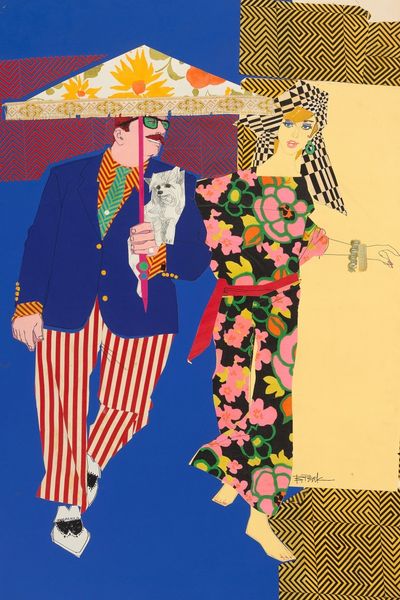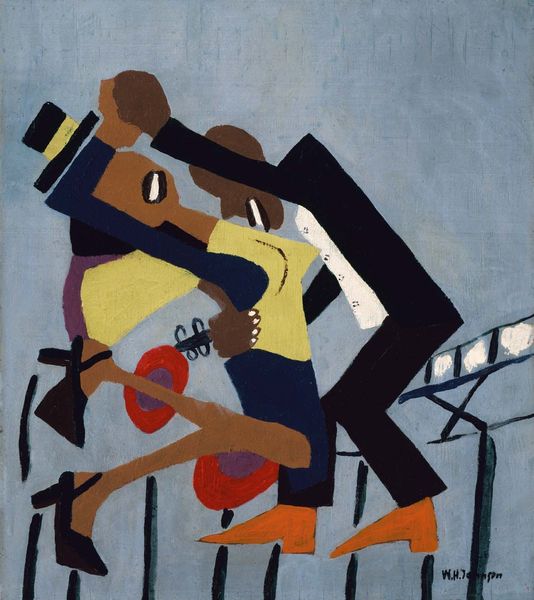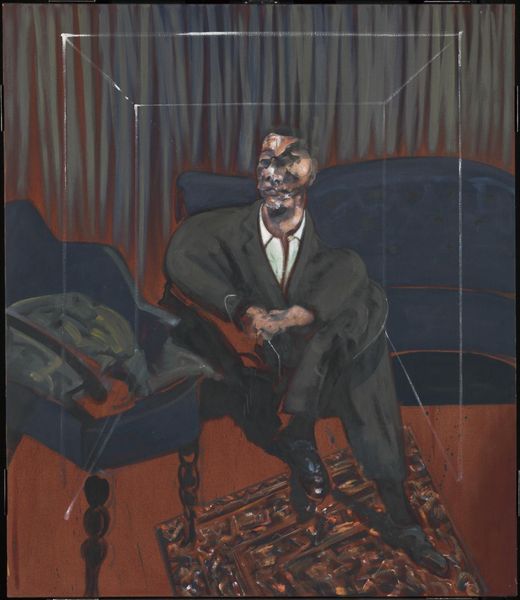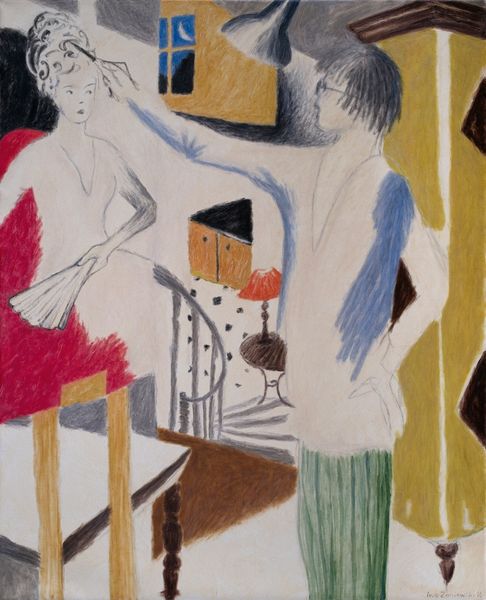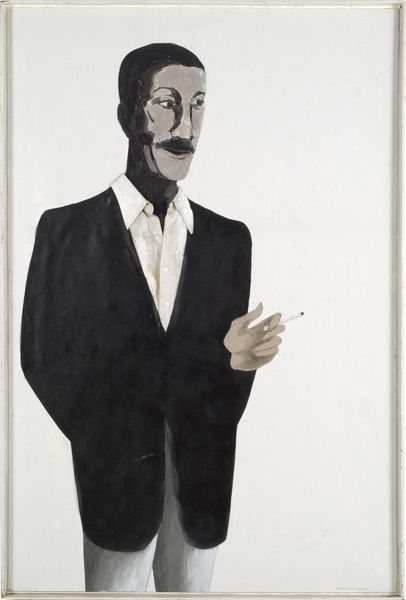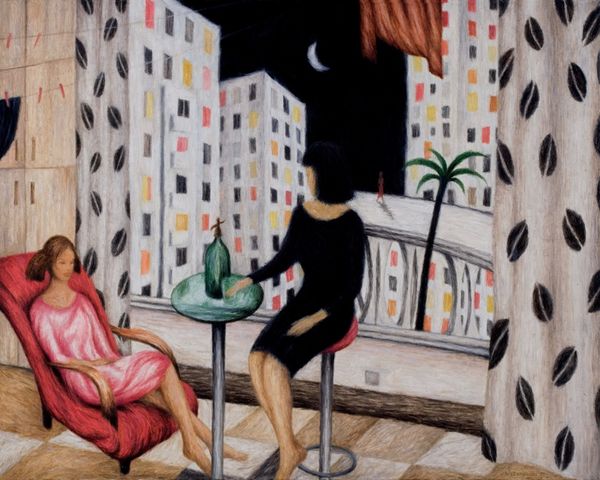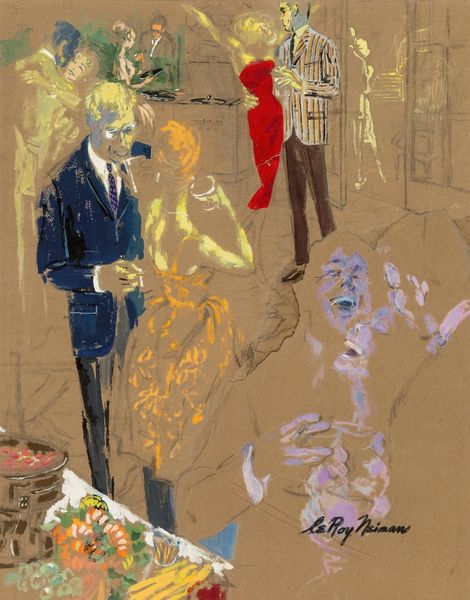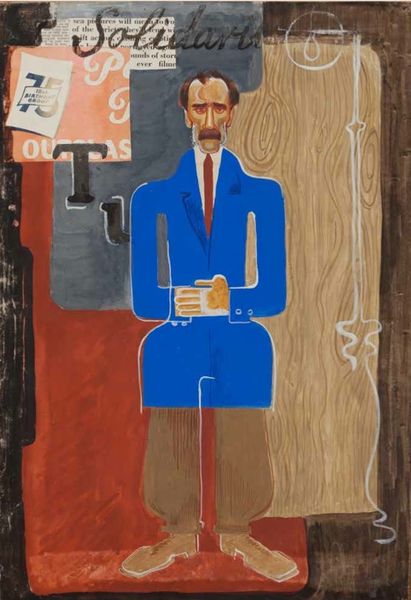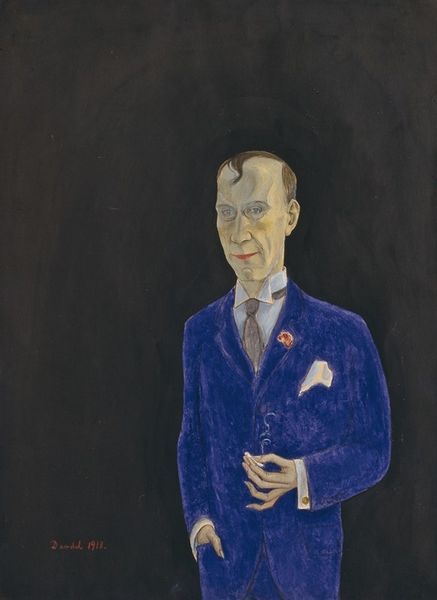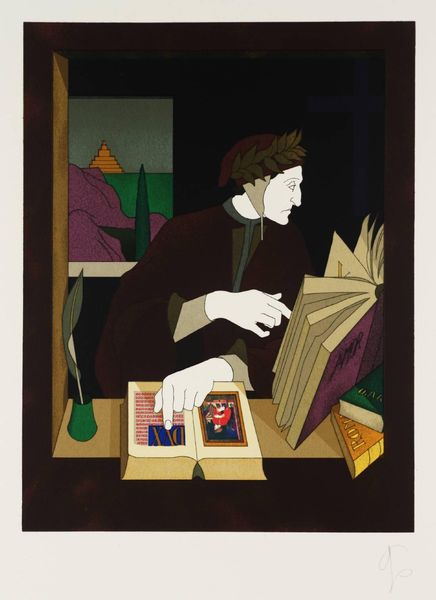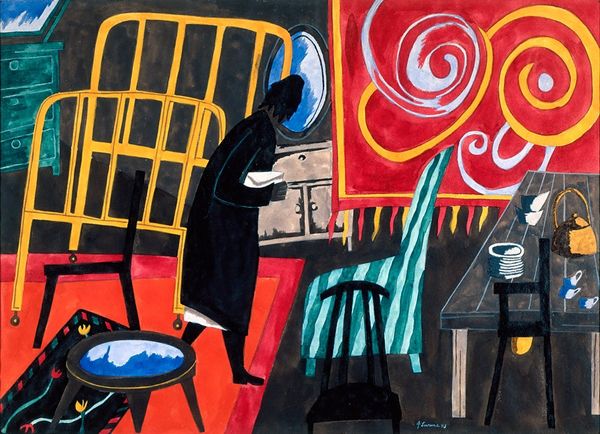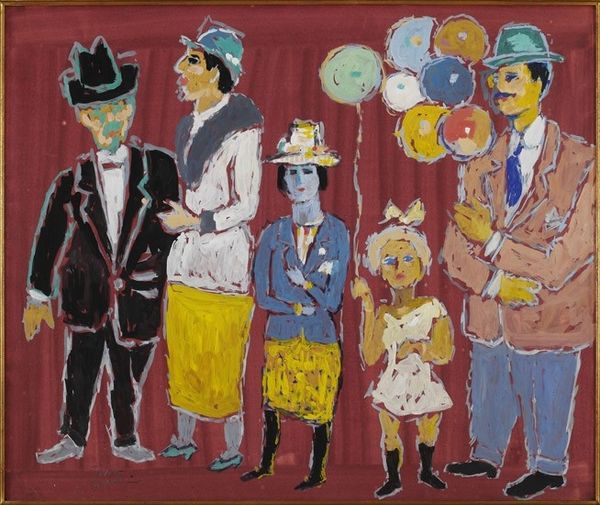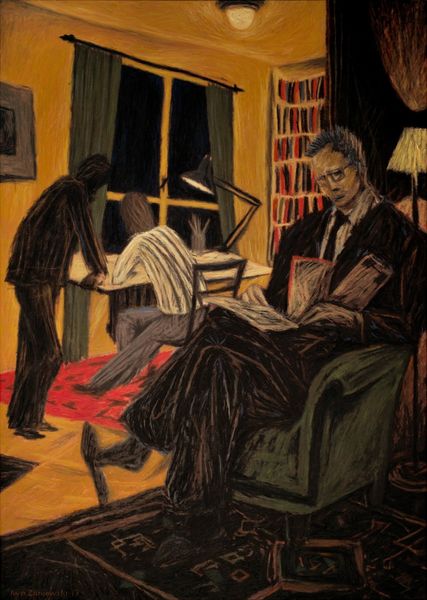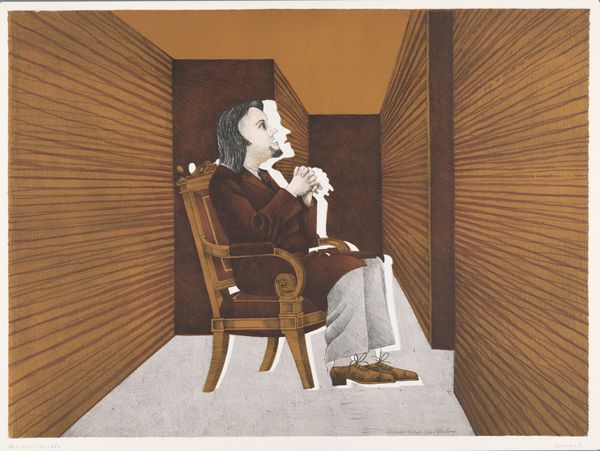
painting, acrylic-paint
#
african-art
#
narrative-art
#
painting
#
pop art
#
acrylic-paint
#
figuration
#
social-realism
#
naïve-art
#
history-painting
#
modernism
#
realism
Copyright: William H. Johnson,Fair Use
Editor: So, here we have William H. Johnson's "Abraham Lincoln" from 1945, painted with acrylics. It’s… intense. Lincoln stands there so formally, surrounded by these stark images – burning buildings, hanging figures, and rows of crosses. What's the visual story that’s unfolding here? Curator: The power of symbols here really strikes me. Johnson gives us Lincoln, but not in isolation. He’s presented with the violent realities of the Civil War era and its aftermath. See how the crosses, coupled with the Red Cross symbol, evoke loss and healing? What do the lynched figures communicate to you? Editor: I think they speak directly to the racial violence that persisted even after emancipation. The burning building reminds me of the destruction during the war, but the bodies hanging underneath also conjure the horrific images and reality of the KKK and vigilante 'justice' throughout American history. Curator: Precisely. And notice how Johnson uses the American flags juxtaposed with all these images of destruction? It questions the promise of equality and freedom, especially for African Americans during that time. Editor: Right. It makes you think about the ideals of America versus the lived experiences of so many. And that building, shaped like the Capitol... it’s like a promise, a looming but perhaps unfulfilled one. Curator: Exactly. Johnson distills complex historical and social commentaries into a set of potent visual icons. It’s less a portrait and more a cultural reckoning. How does understanding these symbolic components change your initial reading of the work? Editor: It definitely adds a layer of complexity. Initially, I saw just a portrait, but now I see a critical commentary on the American experiment itself, using Lincoln as a figurehead caught within a turbulent historical context. Thank you! Curator: My pleasure. It's fascinating to see how these symbols retain, and even amplify, their meanings across time. Johnson forces us to confront a difficult past through deceptively simple forms.
Comments
No comments
Be the first to comment and join the conversation on the ultimate creative platform.
